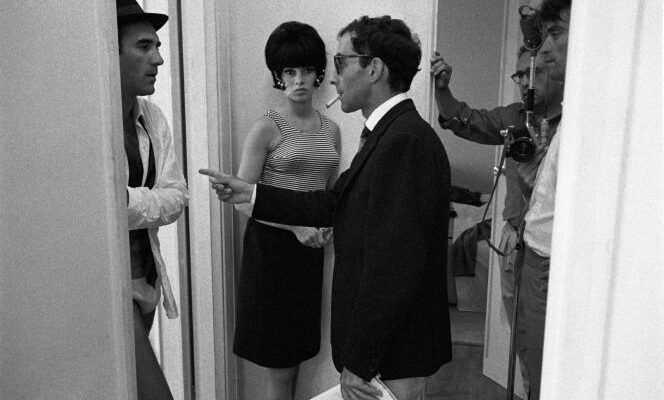“Cinema is dead, long live cinema! The story-camera 2 ”, by Antoine de Baecque, Gallimard,“ Illustrated library of stories ”, 364 p., € 28, digital € 20.
Historian of culture with a strongly cinematographic prism (imposing biographies of Godard, Truffaut and Rohmer, direction of Cinema notebooks from 1996 to 1998 …), Antoine de Baecque * today publishes Cinema is dead, long live cinema!, second volume of History-camera, the first of which was published in 2008 (Gallimard). This was devoted to the relationship between history and cinema. This one evokes the elective link that the seventh art has with death. Death of the media itself, such an incessantly relaunched question. But also the way in which death ontologically attaches to the cinema, which, by nature, records the living as a trace, each new projection becoming the index of death at work at the same time as of the miracle of a resurrection repeated at leisure. .
Last sacraments
Death is thus everywhere in this book, but it is the love of cinema and of life that guides its writing and movement. That of the cinema itself is the object of an annoyance that does not speak its name, coupled with a fine irony. Two figures, closely associated with this grieving renaissance that is modern cinema, the filmmaker Jean-Luc Godard and the critic Serge Daney (1944-1992), have, as the author reminds us, suffused the cinephilic thought of this dismal aura. at the end of the 1980s. Considerations both objective (the change of the big studios, competition from screens) and subjective (the melancholy turn of Godardian creation, the approach of his own death in Daney) determined this inflection.
Bouncing back on the news of a pandemic which has revived this sepulchral anxiety at an industrial level (closing of theaters, bankrupt companies, triumph of platforms), the author has a good time showing that the anguish of his own death has in fact always crossed the history of cinema. It starts with nothing less than Louis Lumière (1864-1948), who considered his invention to be without a future. Each technological advance – the arrival of speaking, competition from television, the switch to digital… – will then call with metronomic regularity the last sacraments on its anticipated remains.
Resurrectional visions
In truth, what Antoine de Baecque endeavors to show is that each of these “Little deaths” produces a crisis leading to an aesthetic revitalization of cinema: “We can therefore say of the cinema that it is alive only to think of its imminent death, all the more alive since it thinks of its death with the fever of the dying man. No doubt this is why the seventh art, perhaps because it considered itself the greatest, has always believed itself to be the most ephemeral. “ More broadly, each historic earthquake will challenge cinema, the art of witnessing, of representation. The pages devoted to the resurrectional visions of the soldiers of 14-18 by Abel Gance (1889-1981), to the bitter and long debate on the representation of the camps, the concern of which constituted modern cinema, or to Avatar, by James Cameron (2009), approached as one of the rare American fictions that measure up to the tragedy of 9/11, all revolve around this question.
You have 10.46% of this article to read. The rest is for subscribers only.
